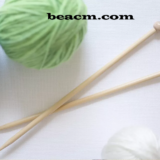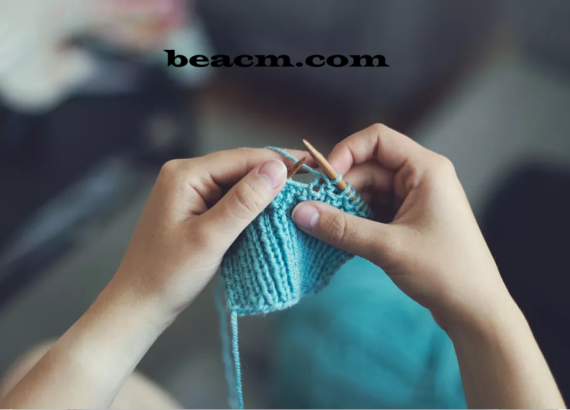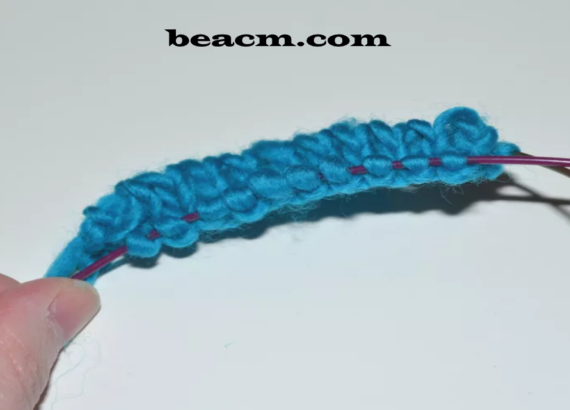How to knit socks with two circular knitting needles
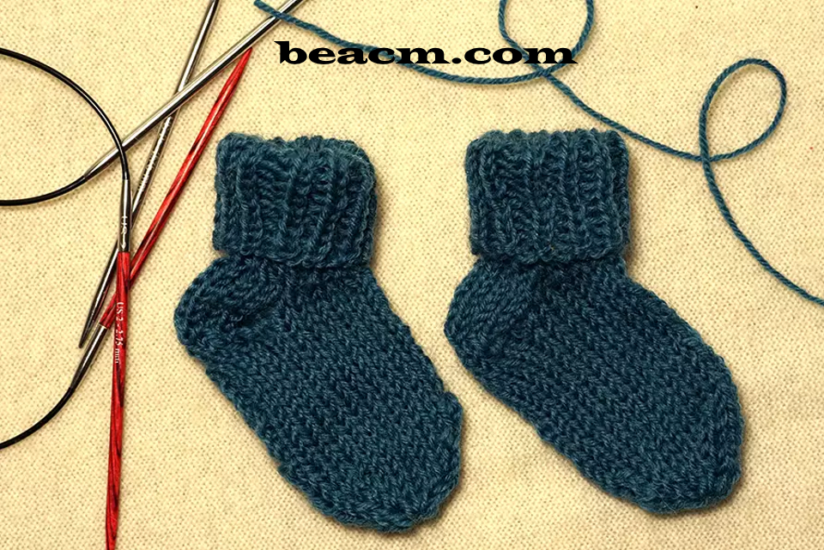
How to knit socks with two circular knitting needles
Why knit on two circular knitting needles?
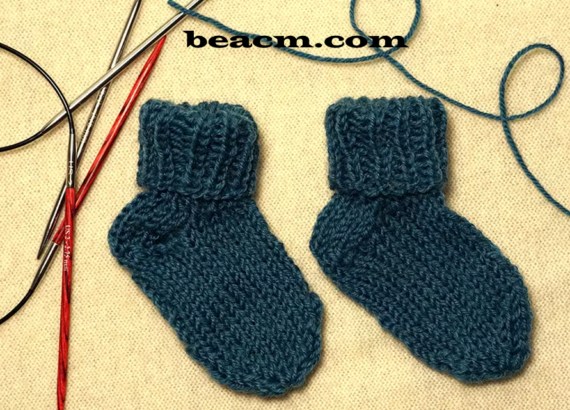
Have you tried knitting socks on two circular knitting needles? It is possible and might be easier if you don’t like to work with double-pointed needles (or DPNs). It is also a good option for sock patterns that do not match any of your DPNs.
This method gives the knitter a little more control over the socks. It’s a good intermediate step between working with double-pointed needles and working with two socks simultaneously on two circular needles (if you like knitting socks, this is extremely efficient).
You need to make sure that your needles are the same size or at least very close together. For example, you can probably get away with a US size 7 and 8, but not necessarily with a 7 and 9. You may need to create a color patch to test it.
This is a quick pattern, perfect for trying the two-needle method.
Piercing and dividing the stitches

First pour the number of stitches required onto one of the circular knitting needles.
Just as when knitting with DPNs, you now have to divide your stitches between the two needles used.
- Place half of the stitches on the second needle by pushing it as you would do for cleaning.
- If you have a particular method for joining stitches in the round, you can use it now or start knitting.
You can place a stitch marker in the last stitch or between the penultimate and last stitches on the needle to mark the end of the round. If your needles do not match, you will probably remember which is the second part of the round.
Start sock
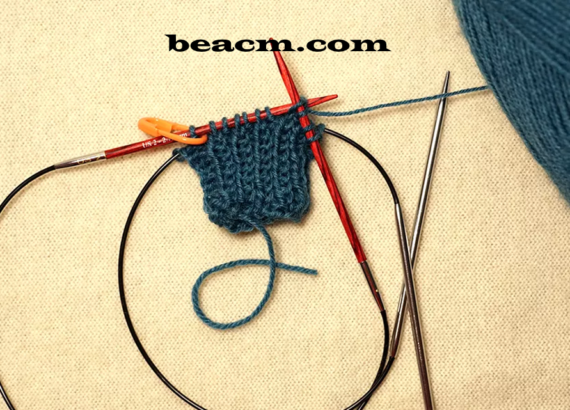
After you have sewn both needles, you can start knitting. The most important point to keep in mind when knitting something round on two circular needles is that the stitches on the needle are always worked with the same needle.
For example, if you have a white needle and a blue needle, all stitches on the white needle will work with the other end of the white needle. Once these stitches are worked, work the stitches from the blue needle with the other end of that needle.
If you can remember that you only work with one needle at a time, things will become very easy for you.
Working on the heel
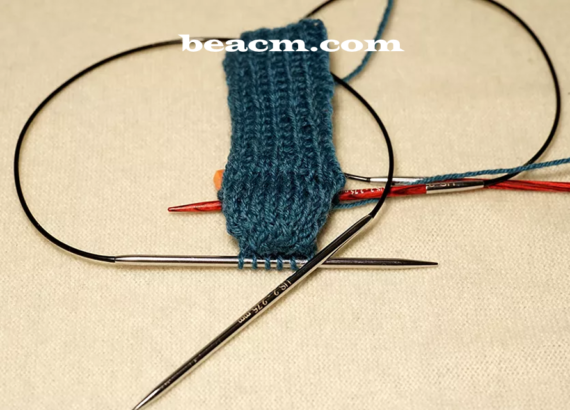
If you know the basics of knitting in the round with two circular needles, continue in this way for the length of the sock leg.
When it’s time to work the heel flap, simply leave half of the stitches hanging on the cable of your circular needle while you work the heel flap and turn the heel on the other needle and work back and forth.
Once this is achieved, the last difficult part has to do with getting the stitches correctly distributed to work the gusset and foot.
Start the gusset
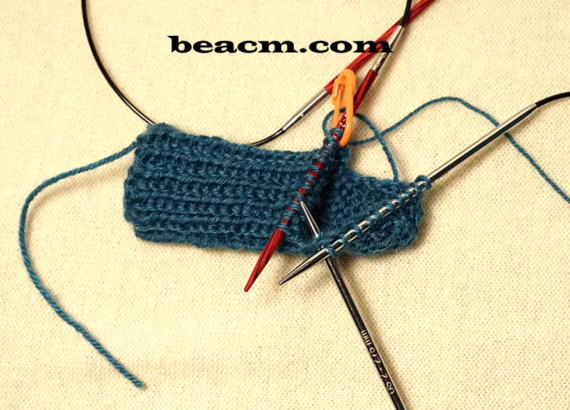
As soon as your heel rotation is complete, first work over these stitches again. Using the same needle, take up stitches along the heel flap in the number indicated in your pattern and knit them.
Next, you will want to place a stitch marker. Here you would change the needles in a pattern written for double-pointed needles, so you can use the marker to tell where your offshoots go.
Then knit half the stitches for the top of the foot (which have been working on the heel all along) on this needle.
Take the other side of the gusset
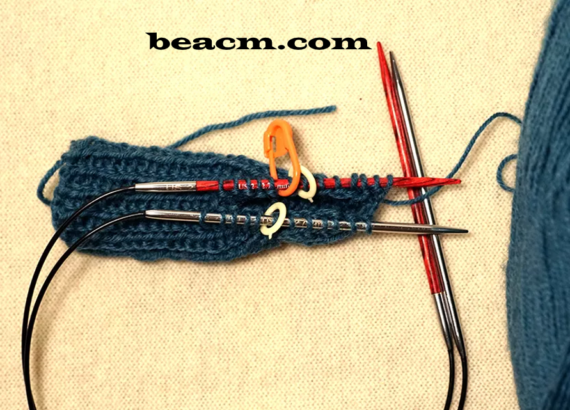
Do the same on the other side with the second needle. Knit over the remaining leg / cuff stitches, place another stitch marker (this would be the end of a needle if you were using colons) and take stitches along this side of the heel flap.
Since the round usually ends in the middle of the heel, knit half of your heel stitches on this needle. This is the end of your round, and you should have half your stitches on each needle.
Now you can start to remove your gusset and work in the same way as before. If you use a pattern written for double-pointed needles, remember that the stitch marks indicate where the ends of the needles would be.
Continue knitting according to the pattern
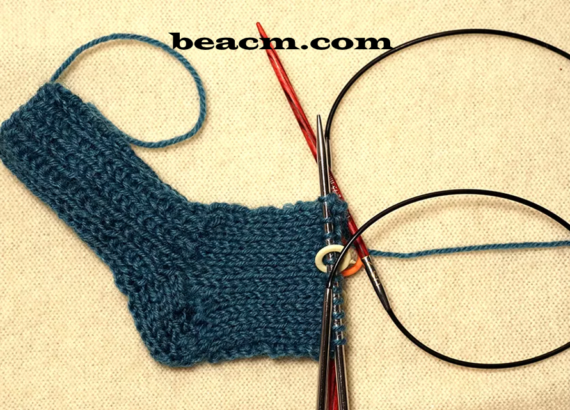
From here, knitting a sock on circular knitting needles is exactly the same as we have seen when knitting the cuff.
Remember these two points:
- You work each stitch section with both ends of the same needle.
- The stitch marks indicate where your needles would end if you were knitting with double-pointed needles.
Just keep going over the gusset, foot and toes as you would normally do with any other sock knitting method. When you’re ready to graft, your stitches should already be evenly distributed between the two needles so you can sew the end together and get started.

